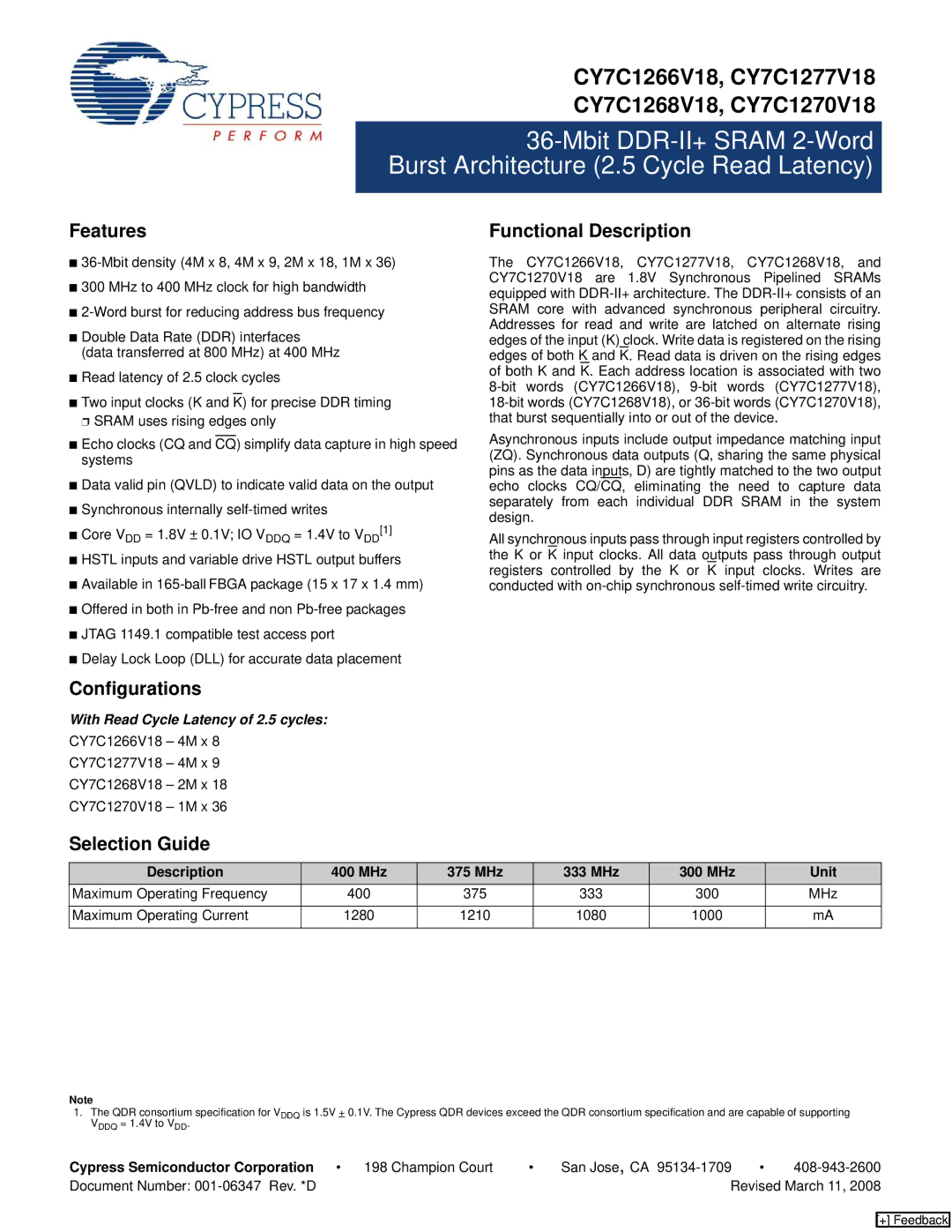
CY7C1266V18, CY7C1277V18
CY7C1268V18, CY7C1270V18
Features
■
■300 MHz to 400 MHz clock for high bandwidth
■
■Double Data Rate (DDR) interfaces
(data transferred at 800 MHz) at 400 MHz
■Read latency of 2.5 clock cycles
■Two input clocks (K and K) for precise DDR timing ❐ SRAM uses rising edges only
■Echo clocks (CQ and CQ) simplify data capture in high speed systems
■Data valid pin (QVLD) to indicate valid data on the output
■Synchronous internally
■Core VDD = 1.8V ± 0.1V; IO VDDQ = 1.4V to VDD[1]
■HSTL inputs and variable drive HSTL output buffers
■Available in
■Offered in both in
■JTAG 1149.1 compatible test access port
■Delay Lock Loop (DLL) for accurate data placement
Functional Description
The CY7C1266V18, CY7C1277V18, CY7C1268V18, and CY7C1270V18 are 1.8V Synchronous Pipelined SRAMs equipped with
Asynchronous inputs include output impedance matching input (ZQ). Synchronous data outputs (Q, sharing the same physical pins as the data inputs, D) are tightly matched to the two output echo clocks CQ/CQ, eliminating the need to capture data separately from each individual DDR SRAM in the system design.
All synchronous inputs pass through input registers controlled by the K or K input clocks. All data outputs pass through output registers controlled by the K or K input clocks. Writes are conducted with
Configurations
With Read Cycle Latency of 2.5 cycles:
CY7C1266V18 – 4M x 8
CY7C1277V18 – 4M x 9
CY7C1268V18 – 2M x 18
CY7C1270V18 – 1M x 36
Selection Guide
Description | 400 MHz | 375 MHz | 333 MHz | 300 MHz | Unit |
Maximum Operating Frequency | 400 | 375 | 333 | 300 | MHz |
|
|
|
|
|
|
Maximum Operating Current | 1280 | 1210 | 1080 | 1000 | mA |
|
|
|
|
|
|
Note
1.The QDR consortium specification for VDDQ is 1.5V + 0.1V. The Cypress QDR devices exceed the QDR consortium specification and are capable of supporting VDDQ = 1.4V to VDD.
Cypress Semiconductor Corporation • 198 Champion Court | • | San Jose, CA | • | |
Document Number: |
| Revised March 11, 2008 | ||
[+] Feedback
